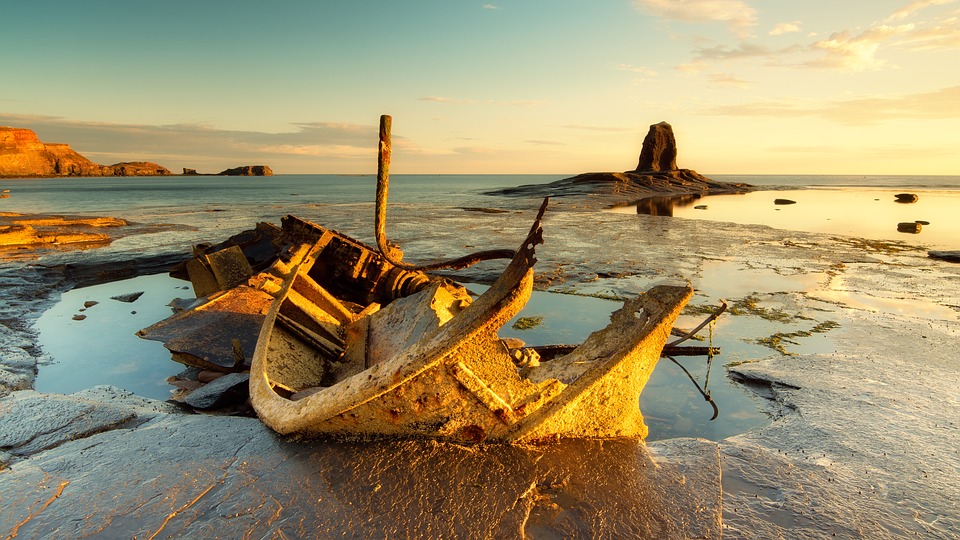Updated: Article originally published on 14/11/2018
The relationship between steel and seawater is incredibly complex and it can be challenging to diagnose suitable steel grades for offshore and shipbuilding applications. This is due to a dynamic range of corrosive phenomena, including: oxidation; anaerobic corrosion; the formation of biofilms; and application salinity. Saltwater concentration has a massive impact on the long-term performance of steel grades used for submerged components such as pipework and offshore structures.
In this blog post, Masteel explores the corrosiveness of seawater and how certain steel grades are equipped to perform in offshore applications.
Corrosion Resistance and Application Salinity
Water in our oceans is recorded at an average 3.5% salinity. This means that salts, such as sodium chloride (NaCl), comprise roughly 35 parts per thousand (ppt) of seawater. While this may sound like a low-level density, chlorides exhibit an extremely aggressive affinity to metals and can rapidly penetrate steel grades that are not suitably corrosion-resistant. Chlorides eat into the material causing spots and pits in the component surface, which can propagate through the material and rapidly cause complete mechanical failure. This phenomenon is known as pitting corrosion.
The pitting resistance of a steel grade is calculated as a factor of its chemical composition. Length of submersion is a negligible factor in the pitting resistance of steel grades, as chlorides may begin to spot surfaces in relatively short periods. Likewise, the pH value and the temperature of seawater may affect the severity and rate of pitting, but these are uncontrollable variables. Steel grades are subsequently characterized by their alloying content and the presence of anti-corrosive elements. Chromium (Cr), molybdenum (Mo), and nitrogen (N) impart good resistance to chlorination, which is why chrome moly and stainless-steel grades are often applied in marine applications.
Care should be taken to ensure that the passive layer of chromium-rich steel grades is as uniform as possible, particularly for complex components. Variations or imperfections in the passivation layer of a steel alloy provides ideal activation sites for chlorides. Depending on the seawater composition and operating conditions, steels may restore their oxidized patina before chlorides irreversibly penetrate the material.
The ability for steel grades to restore their corrosion-resistant layers depends upon their chemical composition, seawater temperature, and salinity. Identical steels may display differential pitting rates depending on their area of application. For example, offshore Arctic facilities may experience significantly lower temperatures and reduced salinity than structures nearer the equator due to melt ice.
Steel Grades from Masteel
Masteel is a global supplier to both the shipbuilding and offshore industries, providing far-reaching solutions to established industry challenges. We offer numerous steel grades with exceptional corrosion-resistant properties.
If you would like any more information about our steel grades suitable for use in the offshore industry, browse the table below. Or, contact us directly with any more questions.
| Standard type | Type | Grade | Class | Market | Link |
|---|---|---|---|---|---|
| grade AH36 | Offshore I Shipbuilding | Learn More | |||
| API | 2H | Grade 50 | Offshore | Learn More | |
| API | 2W | Grade 51 | Offshore | Learn More | |
| DH36 | Offshore I Shipbuilding | Learn More | |||
| S | 355 | G10 | "+M/+N" | Offshore | Learn More |
| S | 355 | G7 | "+M/+N" | Offshore | Learn More |
| S | 355 | G8 | "+M/+N" | Offshore | Learn More |
| S | 355 | G8 | "+M/+N" | Offshore | Learn More |
| S | 420G1 | "+Q/+M" | Offshore | Learn More | |
| S | 420G2 | "+Q/+M" | Offshore | Learn More | |
| S | 460 | Offshore | Learn More | ||
| S | 460G1 | "+Q/+M" | Offshore | Learn More | |
| S | 460G2 | "+Q/+M" | Offshore | Learn More |

